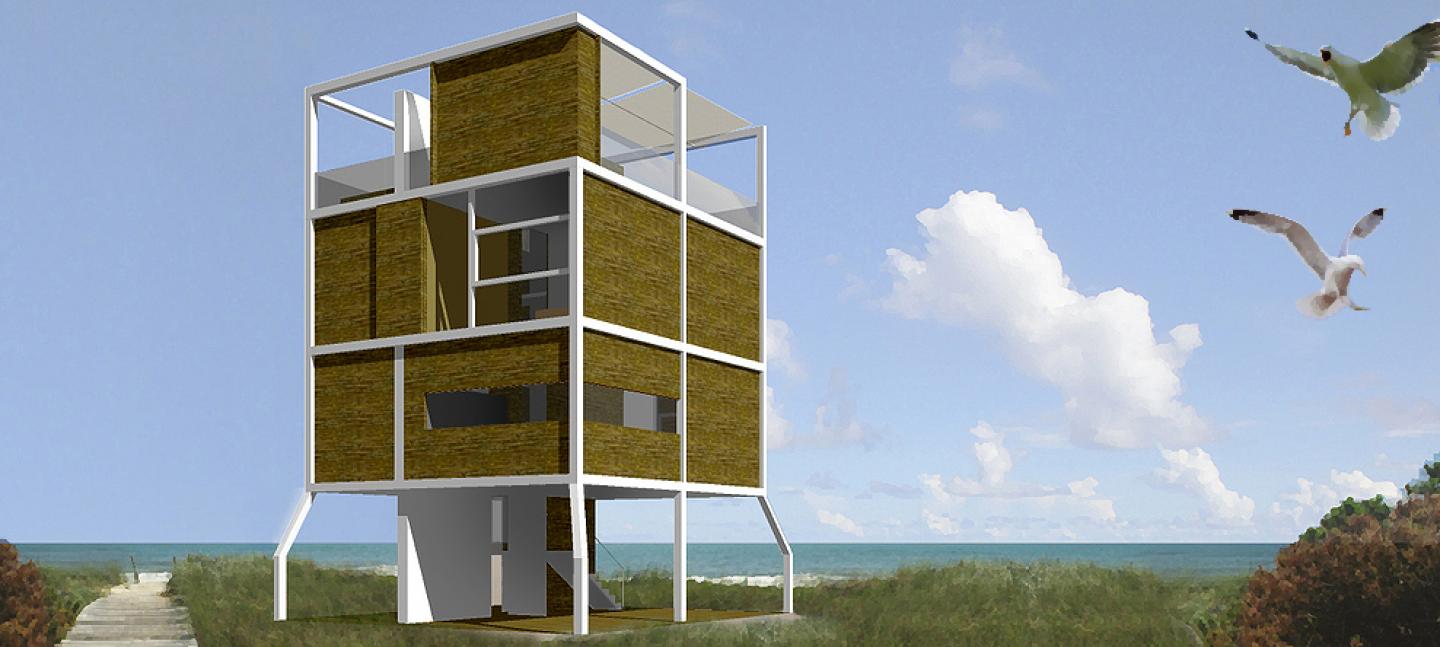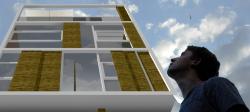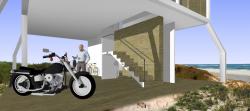Project revisiting the concept of the American cabin, updating it in a contemporary idiom through minimizing and stylizing the lines and architectural elements, while still remaining true to its purpose and traditional spirit as a private getaway. CRAB HOUSE is a Zoomorphic cabin inspired by a crab, reflected in the shape of its stilts. The architecture developed vertically as a response to preserve as much as possible the existing on-site garden.
2008
Crab house is built in a very simple, revealing steel frame structure that accentuates its lightness and holds together all the other architectural elements made of wood and glass panels. The facades are articulated by folding wooden panels that act as shudders and reveal -- when opened -- the glass skin of the building underneath. They also function to make the house as translucent or opaque to its surroundings, depending on the desired level of privacy. The shudders also totally close and secure the house for extended periods of time, and to protect it from various weather conditions. Its like a showcase glass box filled with sea light, while containing a wooden skin that it alternately sheds or redresses itself with, according to the inhabitants needs. The structural staircase and plant design of the plumbing-electrical-heating system column -- serving the interiors from the ground floor and interlocking with the building -- are centrally located in order to maintain the lightness but still increasing the stability of the structure. The interiors have a modern layout with special attention to closet and containing space. The circulation is also important not to interfere with the houses private spaces but still easily connect the rooftop solarium -- as an alternately public or private space -- to the ground floor loggia, when socialization and interaction with guests are welcome. Finally the concept is to create a very simple but responsive shelter.The design is deliberately essential and green in its purpose in order to avoid any waste or excessive use of material. Every material surface has to respond to its purpose. In a green vision this home is potentially non-invasive with the challenge and goal to become a zero-footprint home, like any significantly energy-efficient design as the energy generation and consumption can be smart (solar, thermal, etc.) The goal was also to develop a methodology that meets five criteria: a smart, sustainable, aesthetically pleasing, cost-effective, energy-efficient solution for the building. Suburban sprawl, as we all know, is the built world encroaching further into the unbuilt. Today we need to use design to reverse the flow -- let the outside come into our homes and buildings. The concept is: We should let the outside inside and build the house around the “tree”. A moment reveals plenty of problems with this idea, but maybe ideas like this one could spark debate and discussion over how to do the necessary: reduce the footprint we make as a society, and reduce our cultural propensity to force the natural environment (and even our own natural bodies and minds) into regular shapes with right angles. In the broad context, sustainable architecture seeks to minimize the negative environmental impact of buildings by enhancing efficiency and moderation in the use of materials, energy, and development space. Most simply, the idea of sustainability, or ecological design, is to ensure that our actions and decisions today do not inhibit the opportunities of future generations. This term can be used to describe an energy and ecologically conscious approach to the design of the built environment. Seeing as the client is an environmental commissioner of the local community, it underscores even more the mission of eco-efficient design. Basically the house is designed trying to meet green criteria by employing standard principles of thermal insulation in order to achieve the desired outcome (thermal comfort with low energy consumption). Ideally it would have active solar devices such as photovoltaic solar panels and solar water heating. It is going to be built – where possible -- with recycled or second hand materials -- such as reclaimed lumber for the wood panels – and a selection of insulation materials and insulated glazing. It is required by building codes in many areas as a mandatory energy conservation measure.
Andrea Salvini
THE CRAB HOUSE by Andrea Salvini in United States won the WA Award Cycle 20. Please find below the WA Award poster for this project.
.jpg&wi=320&he=452)
Downloaded 85 times.

.jpg)





